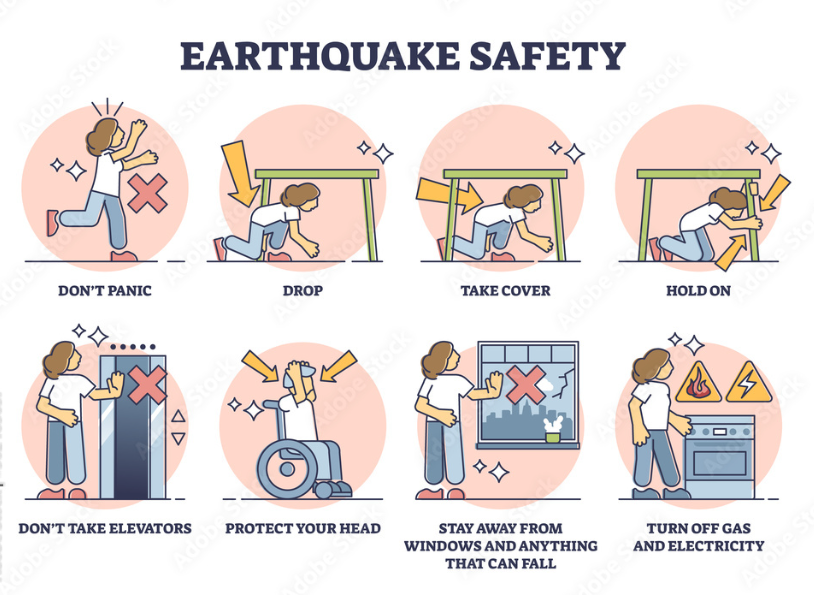
What to do during an earthquake: recommendations from the Emergency Situations Ministry
1) The main and unchanging rule is not to panic and remain calm.
2) If you are in a building on the first or second floors, leave the building and move away from it to an open area. Remember, you have about 15-20 seconds for this. Run out of the house quickly but carefully. Beware of debris, electrical wires, and other sources of danger.
3) If you are in a building above the second floor and realize that you cannot make it outside in time, do not rush to the stairs or elevator. Take the safest places in the room. These are openings in load-bearing walls (you need to find out in advance which walls in your apartment are load-bearing and remember this). You can take cover under sturdy tables, beds capable of supporting the weight of heavy objects. The main danger during a destructive earthquake comes from falling internal walls, ceilings, and chandeliers. Definitely stay away from windows and heavy objects. Do not go out on the balcony.
4) On the street, try to find a place in an open area. Stay away from tall structures, overpasses, bridges, and power lines. Check if there are casualties nearby, report them to any emergency service, and provide assistance if possible.
5) If you are in a car, stop, open the doors, and stay in the car until the shaking stops.
6) In a public place, a large crowd of people is a danger. Try to get out of the crowd, do not fall, and do not succumb to the panic moods inherent in the crowd.
7) When you return home, check if the building has suffered serious damage. Make sure there is no gas leak, and only then use matches and a switch.
8) Do not be surprised if you feel new tremors. After the first strong shock, a temporary lull may occur, followed by a new shock. This phenomenon is simply the action of different seismic waves of the same earthquake. Aftershocks may also occur, i.e., separate earthquakes that occur after the main shock. They can last for several days.
Rules of conduct during a tsunami
A natural signal of a possible tsunami is a 6-7 magnitude earthquake.
A sudden rapid rise or fall of the sea level may warn of an approaching tsunami.
IMPORTANT TO REMEMBER that the listed signs may not accompany a tsunami (for example, the intensity of the shocks on the shore will be less than 6-7 points). However, when any of these signs appear, you should immediately leave the shore. Maintain self-control while moving.
1) Take cover in places with an altitude above sea level of at least 30-40 m. On a hill, climb up the slope, not down the valleys of rivers and streams. If there is no elevation nearby, move away from the seashore at a distance of 2-3 km.
2) Do not return to the shore after the first tsunami wave, as other waves usually follow the first one, and the second and third waves can reach the highest height.
3) Never go down to the sea to see the exposed bottom during a tsunami or watch the tsunami. When you see the approaching wave, it will be too late to save yourself.
4) Ships in coastal waters or anchored in open roads or bays with a wide entrance, and especially at the pier, when there is a tsunami threat, should urgently go out to sea beyond the 50-meter isobath.
5) Do not leave the safe place until the tsunami alarm is canceled.
You can add one right now!